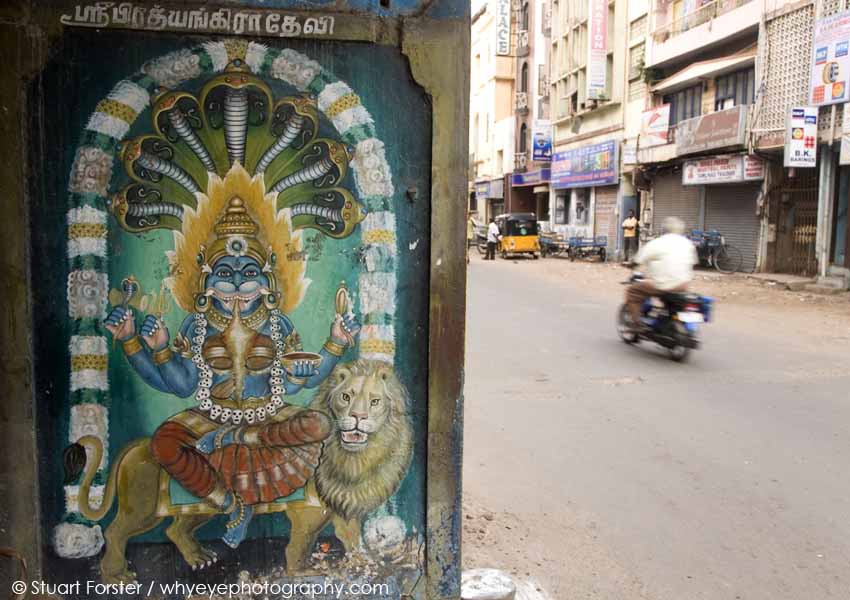Stuart Forster explores the heritage of Fort St George and Georgetown in Chennai, India.
Disclosure: Some of the links below and banners are affiliate links, meaning, at no additional cost to you, I will earn a commission if you click through and make a purchase.
If you know India you’ll be aware that the name Chennai quickly gained acceptance after the city was officially renamed, from Madras, in 1996. This city, the capital of Tamil Nadu, is often regarded as the gateway to southern India.
Chennai has evolved from a small settlement between the Cooum and Adyar rivers. Land there, to the south of a fishing village, was acquired by Francis Day, on behalf of the English East India Company, from the region’s ruler, the Nayak of Vandavesi.
The East India Company sails in
The concession, agreed on 22 August 1639, offered British merchants a trading post and a base for acquiring locally produced cotton. Yet the captains of the East India Company’s ships were unimpressed; Day opted for a site that did not afford them the protection of a natural harbour, so in the early trading days of Madras, goods had to be taken out to the red and white flagged ships of the East India Company on local masula boats.
Though it’s difficult to imagine today – given that the densely settled conurbation is one of the world’s most populated cities, stretching 9 km inland at its broadest point – there was little on the skyline of this stretch of the Coromandel Coast. The name of the fishing village that the sailors could view from their vessels in the swell of the Bay of Bengal, has become blurred over the centuries; some records suggest it was Madraspatnam, others hint that name was Channapatnam.
The opening of Fort St George
The first building erected by the new landowners was a factory; though in the modern sense we’d be inclined to regard it as a warehouse or trading post. Wary of possible attacks and keen to protect their investments, Day and his superior, Andrew Cogan, ordered a stockade to be built. The construction of walls, bastions and ramparts continued for fourteen years. Yet on 23 April 1640, the feast day of St George, the patron saint of both England and the East India Company, the defences were declared complete and the official opening of Fort St George was celebrated.
For more than three centuries, Fort St George played a significant role in the story of Britain’s involvement in India. It became the headquarters of the Madras Presidency. Even after India gained independence from British rule, in 1947, Fort St George remained an important seat of administrative power. The Chief Minister of Tamil Nadu still has his residence in the fort.
A base for exploring Tamil Nadu’s heritage
Chennai is often the hub for exploring ancient cities such as Mahabalipuram, Kanchipuram and the great temples of Tamil Nadu’s south. Yet if you’re interested in history and culture you’ll find sites of note within the state capital. Also, anyone passionate about classical dance should take in a traditional Bharatanatyam performance while here; the dance schools of Chennai are highly regarded by those in the know.
Also, quite a number of visitors are surprised to learn that Mylapore, to the city’s south, has close connections with St Thomas the Apostle. Many people believe the man known as Doubting Thomas was martyred while praying at the hill now known as St Thomas Mount, in AD72.
Swami Vivekananda and the Ice House
St Thomas is not the only spiritual leader with connections to Chennai. Swami Vivekananda, the Hindu ascetic and philosopher, stayed in the former Ice House, which is now run by the Ramakrishna Mission, for nine days during 1897. Earlier, from the 1840s to 1870s, the thick-walled Ice House was used as the Tudor Ice Company’s storage point for ice harvested from the frozen winter lakes of Massachusetts, in the USA. Natural ice was a valuable commodity in the era before machines produced it.
The former Ice House stands opposite a popular section of Marina Beach. Local residents boast that, at more than 12 kilometres from north to south, they have the longest urban beach in the world. Fort St George is located to the north of the beach, opposite Chennai Port.
Travelling by auto-rickshaw
As you unfold yourself from the back seat of an auto-rickshaw, outside of the fort’s whitewashed walls, you’ll spot a 50-metre tall flagpole; India’s tallest. Anyone keen on history will spot a host of familiar names. Admiralty House is also known as Clive House, after Robert Clive, who won renown in the 18th-century Carnatic Wars. Clive married Margaret Maskelyne and lived in the building. He was taken prisoner by the French, when they seized the fort in 1746, but escaped and went on to make his name as a man of action.
The Fort Museum opened in 1948. From 1861 until Independence the building was an Officers’ Mess. Even today the spirit of the Raj is evident with an impressive collection of life-size oil paintings – portraits of former governors and royal figures, historic costumes, medals, and documents. The museum’s long room once housed a public exchange where merchants and brokers met to broker deals and, until 1841, the roof was used as Madras’s first oil-fueled lighthouse.
St Mary’s Church and Elihu Yale
St Mary’s Church, also within the fort, is the oldest British-built church outside of Europe. It was consecrated on 28 October 1680, though the spire, which resembles an obelisk, was added only in 1795. The first man to be married in the cool shade of St Mary’s was Elihu Yale, who wed Catherine Hynmers on 11 November 1680. He became a Governor of the Madras Presidency and made a fortune through trade. The Ivy League university was named after him in gratitude for the fact he supplied goods which funded an expansion of the Collegiate School of Connecticut.
During British rule, Indians were not allowed to live inside the fort. Consequently, Georgetown grew up next to the fort. The area, now home to countless textile stores and electronic shops, was planned and built following the Anglo-French wars of the 1700s. Georgetown’s restaurants provide good opportunities to taste traditional Tamil foods such as pongal, idli served with spicy sambar gravy, and Chennai paratha. One of the most refreshing drinks you can try is tender coconut water, known locally as elaneer, sold by vendors who stand by piles of green-husked coconuts or operate their businesses from the backs of handcarts.
Mint Street and the Ekambareswarar Temple
Mint Street, so named because money was minted here from 1841, is the home to the impressive Ekambareswarar Temple, which dates to the 1680s, plus the Digambar and Swetambar Jain Temples. The Jain faith is still practised by the descendants of settlers from Saurashtra and Rajasthan in India’s north. If you enjoy religious sites take a look at St Mary’s Co-Cathedral, built in 1775 for Roman Catholic worshippers, and the Armenian Church, whose door may be closed but a couple of knocks and it will soon be answered. You can see the last resting place of the Reverend Haruthium Shmavonian, the founder of the world’s first Armenian journal, Azdarar.
Fort St George and Georgetown in Chennai, India, have long histories but continue to thrive as living districts.
Further information
Thank you for visiting Go Eat Do and reading about Fort St George and Georgetown in Chennai, India. Thinking of visiting India? You may also enjoy reading about South India’s Golden Chariot luxury train.
Photos illustrating this post are by Why Eye Photography.
If you enjoyed this post, please sign up for the free Go Eat Do newsletter. It’s a hassle-free way of getting links to posts once a month.
‘Like’ the Go Eat Do Facebook page to see more photos and content.




